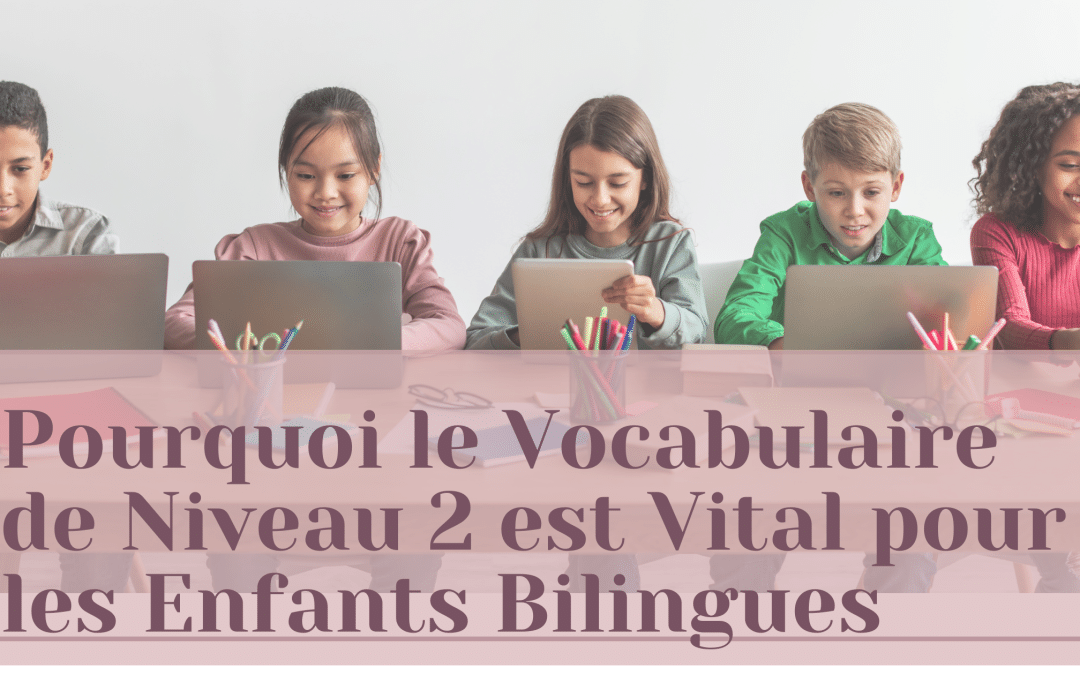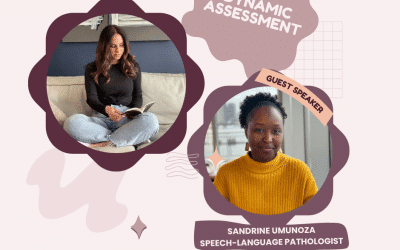The Crucial Role of Tier 2 Vocabulary in Bilingual Children
“You’ve surely heard it before: ‘Children absorb languages like sponges.'” However, this commonly held belief can be misleading, as it doesn’t address two key skills children need to develop: Basic Interpersonal Communication Skills (BICS) and Cognitive Academic Language Proficiency (CALP).
While these terms might sound quite theoretical, they play a critical role in how bilingual or second-language-speaking children develop at school. It’s often the case that a child may appear very comfortable in social conversations (BICS), but this does not mean they have mastered academic language (CALP). Cognitive academic language, which is more abstract and complex, takes much longer to develop—sometimes up to 10 years!
In this post, I’ll explain how this distinction relates to vocabulary learning, particularly Tier 2 vocabulary, and why it is essential for boosting the academic success of bilingual children.
BICS vs. CALP: Understanding the Difference
Basic Interpersonal Communication Skills (BICS) typically develop within the first two years of exposure to a second language. This is everyday conversational language, often supported by contextual cues like facial expressions or tone of voice.
Examples of BICS in a school context:
- Listening: Understanding general instructions in the classroom.
- Speaking: Chatting easily with peers and teachers about common topics.
- Reading: Decoding words without necessarily grasping their deeper meaning.
- Writing: Filling out forms or copying simple responses.
In contrast, Cognitive Academic Language Proficiency (CALP) takes 7 to 10 years to fully develop. This refers to academic language, which is often abstract and lacks contextual supports.
Examples of CALP in a school context:
- Listening: Following precise academic instructions.
- Speaking: Expressing opinions, making arguments, and clarifying concepts.
- Reading: Reading complex texts with good comprehension.
- Writing: Writing a structured essay to support a point of view.
Tier 2 Vocabulary: Why Is It So Important?
The distinction between BICS and CALP highlights how critical Tier 2 vocabulary is for developing academic skills in bilingual children. This type of vocabulary consists of more complex words that are often encountered in school texts but are rarely used in everyday conversations.
Why Tier 2 vocabulary is indispensable:
- Abstraction: It requires stronger abstraction skills and good literacy, as these words are often disconnected from visual context.
- Academic Weight: School textbooks and assessments heavily rely on this vocabulary, making its mastery essential for success.
- Expressing Complex Ideas: It allows children to formulate and understand rich and sophisticated concepts.
How to Choose Tier 2 Vocabulary Words
To maximize the learning of Tier 2 vocabulary, each word must be carefully selected. Here are some important criteria:
- Multiple Uses: Choose words that are encountered across several academic subjects, such as analyze or interpret.
- Frequency: Prioritize words that appear frequently in school texts, such as demonstrate or structure.
- Abstract Concepts: Focus on words that help develop abstract concepts, like clarify or deduce.
📌 Concrete Example:
“In the years following World War I, European nations faced major economic and political upheavals.”
Tier 2 words to extract:
- upheavals (can be used in various academic contexts, e.g., economic, political, or even scientific upheavals)
- faced (important for understanding concepts of opposition or challenge)
Strategies for Teaching Tier 2 Vocabulary to Bilingual Children
You may be wondering: “How can I teach this vocabulary effectively to a bilingual child?” Here are a few practical strategies:
- Use direct instruction: Explicitly introduce each word, defining it and providing clear examples drawn from real-life situations.
- Increase repetition: Reuse the Tier 2 word throughout the day, across different subjects, to reinforce learning and give the child multiple opportunities to practice using these words in various contexts.
- Involve reading and writing: Encourage children to use these words in reading and writing exercises, integrating them into practical activities.
In Summary
The distinction between BICS and CALP is crucial for fully supporting the learning of a second language. Tier 2 vocabulary plays a key role in the academic success of bilingual children. Just because a child seems fluent in a language doesn’t mean they have mastered it in an academic context. Tier 2 words are essential for developing cognitive academic language skills (CALP), and thus, for succeeding in school.
In my training, I go even further by providing tools to help you precisely select these Tier 2 words according to each child’s age and abilities, while offering insights for fully optimizing language interventions.
Discover more about how to enrich the vocabulary of bilingual and second-language-speaking children by exploring my training programs! Together, we can make a significant difference.
In my professional training courses, I explain in greater detail how to target this vocabulary and specific strategies to support second-language learners in improving their language and academic skills. 🌟
👉 Come discover all this and more in my training sessions!
See you soon,
Melissa Farkouh
Discover my training programs



